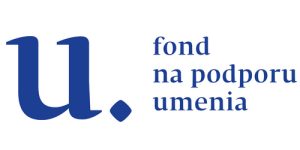We buy black-and-white books for babies, because we know that it is an excellent visual stimulation. And already at that moment, when we “read” pictures for them, page after page, we are laying the foundations of the future reader. We watch how the books get dirty, they build their first fences out of concertina books (by the way, an interesting point of view, in the book “Naše dieťa” (Our child), according to which the previous generations were supposed to be brought up, this was strictly forbidden, because a child should not play with books, this opinion is obsolete, I think, also thanks to the expanding market for baby literature). Reading to children is a habit that, like any other, we build gradually. Currently, there are countless interactive books, educational stories, fantasy stories for all age groups on the market.
Gradually, the texts in the books are lengthened from the first words, sounds, to sentences, short texts, to longer stories. However, reading itself is a combination of the calm voice of the parent and has no rules in itself. Whether it is longer, shorter sentences, more pictures, more text, it is not strictly given what is right. Just watch what interests the child. You will read some book hundreds of times over and over and that is okay, you will skip some stories and maybe come back to them later. Sometimes you do not even need a book. Parents like to make up stories for their children, then it is much more interactive fun, because there is room to change the story and create storylines according to the child’s reactions. Books have got yet another added value. Our vocabulary, despite being highly individual, still contains a limited amount of commonly used words, which are influenced by the daily repetitive routine. Books, on the other hand, contain stories and words that we do not normally use in colloquial speech. In this way, we expand children’s horizons also in the area of speech, later reading consolidates grammatical rules. Research shows that expanding vocabulary directly affects further learning abilities. It is quite logical, the better we understand what is said/read, the more free capacity the brain has for processing and memorizing information. It is known that avid readers don’t need to think that much about grammar, they just “see” it. A significant benefit is the building of imagination and the creativity associated with it. Fairy tales do not have fixed rules to be observed. In fairy tales, one does magic, flies, changes time and space in a way that physical rules do not allow in our world. It can be confusing, inspiring, offers different perspectives and solutions to common situations. Creativity appears to be an essential currency in a future full of uncertainty. We do not know exactly what skills the next generations will need to survive in the future. We only know that they will have to use flexibility and creativity, the ability to adapt to various changing conditions, to balance between threats. In her approach, M. Montessori prefers that stories reflect life situations and are not embellished with fantasy. The rationale is that it is too confusing for children to distinguish the fantastic from the real. She perceives the dreaminess of children as an escape from the real world and prefers searching and researching the real admirable magical events that take place in nature, in the life around us. The choice of what we will read to our children is up to us. Whatever we decide, the time we spend with our children is important.
Did you know that even when children become readers, they still have a deep desire to be read to? This is nothing new, in the past it was common for families to spend time reading together regardless of the age of the family members. Children, and eventually we adults too, look for current literature, current heroes, with whom it is easier for us to identify. With a lot of literature, we always find the same archetypes in different times. The point is really that it may be more difficult for today’s children to identify with the starving babes in the woods, who are looking for food. Children may expect that they are looking for food around the convenience store. Therefore, it makes a lot of sense to support contemporary authors and contemporary literature.
At the same time, it is appropriate to mention the fact that the moment we close a book and exchange our opinions on it, or explain the plot, we are building critical thinking. We create space for different points of view, for questions.
The Kultúrny kyslík (Cultural Oxygen) project was supported from public funds by the Arts Council (Fond na podporu kultúry) as the main partner.
